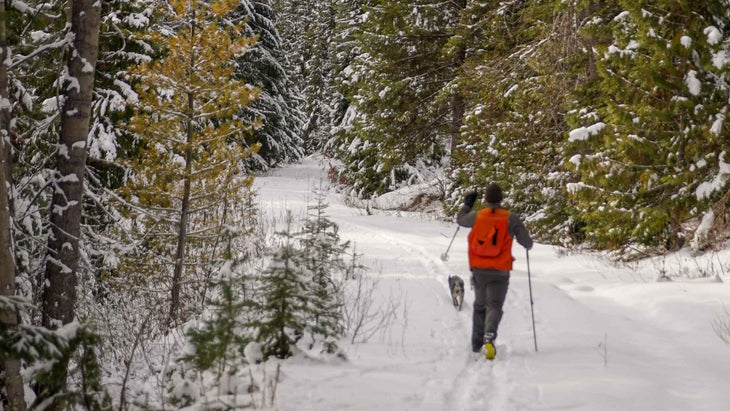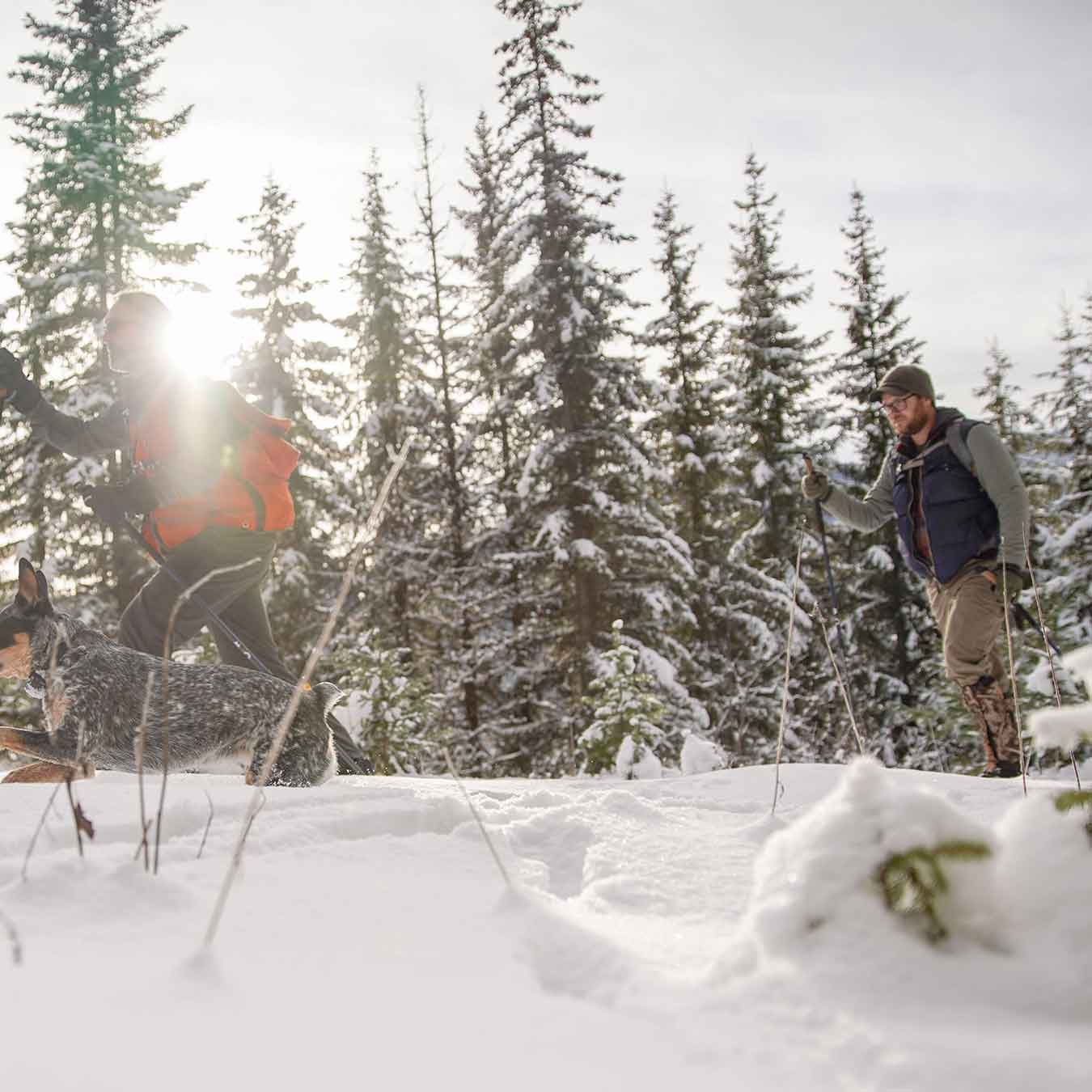The Idaho Panhandle is tucked away so snugly between Washington, Montana, and British Columbia that people often forget it’s there. The landscape is characterized by dense fir, hemlock, pine, cedar, larch, and spruce forests. Deep greens and wooly, gray skies tightly hug the Purcell Trench, rimmed by the Selkirk Mountains to the Northwest and the Cabinet Mountains to the Northeast. This season, the valley bottom is still soggy with slush and muck—difficult conditions to work in for forester and fourth-generation Idaho local Chad Ramsay. Fortunately, Ramsay discovered the solution to post-holing through thinly covered alder and tumbling down slopes due to a loose snowshoe clip: cross-country skis.
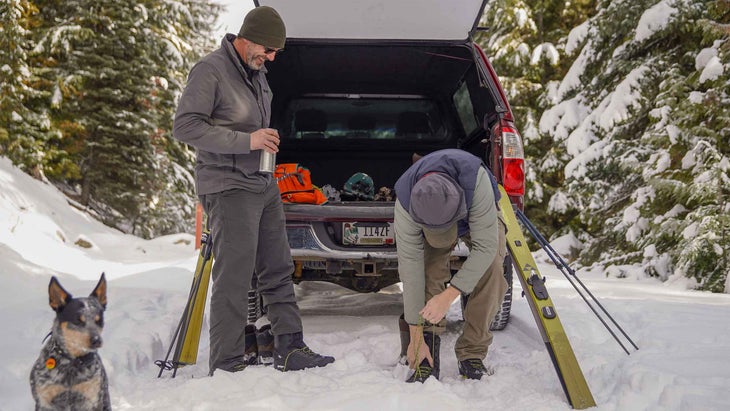
Ramsay manages working forests (a forest that exists to supply renewable wood) and oversees tree health, biodiversity, and sustainable resource utilization. In other words, he covers 25 miles and 5,000 vertical feet on foot a week, assessing the health of the woods. It’s hard work, which is why Ramsay relies on his cross-country skis to navigate the landscape.
The leading causes of injuries in forestry are slips, trips, and falls. Ramsay, who manages a group of foresters, is advocating for ski kits to be added to the gear budget for foresters’ safety, better productivity, and morale (who doesn’t love to ski?). Below is the gear that Ramsay uses to keep safe and make the most of his time spent in the backcountry in the winter months.
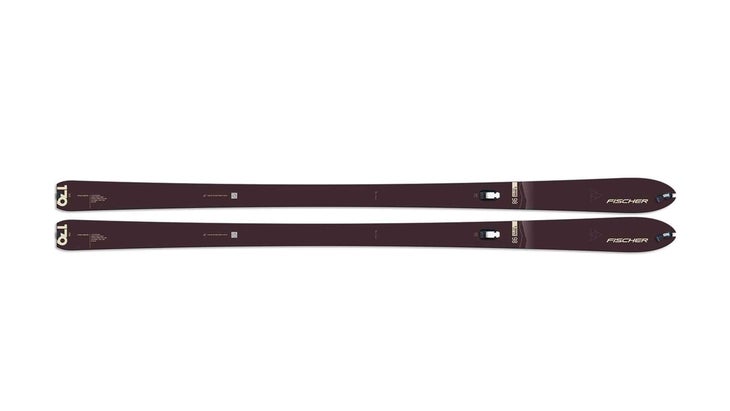
Fischer S-Bound 98 Ski
The only tracks Ramsay encounters in the Idaho Panhandle landscape are winter game trails and his own. There are klicks to cover, and he rarely takes the same route back to the truck. Wide format, off-track cross-country skis with metal edges make traversing and sidehilling easier, safer, and more fun. With a wide underfoot, the Fischer S-Bound 98 has a pivot point comfortably positioned for a long day of cruising and standing stable while note-taking. The nordic-style rocker camber is designed with soft snow in mind. These skis are compatible with full-length and partial-length skins if the going gets steep.
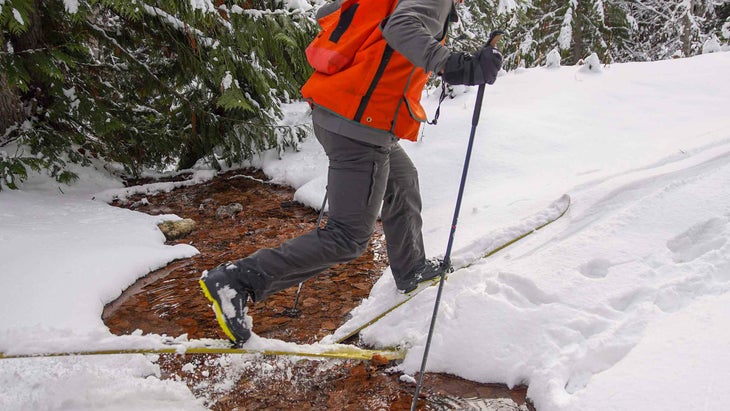
“Snow slows down productivity. Switching from snowshoes to skis doubled the amount of ground I can cover,” says Ramsay. “And exercise is just good for mental health. If I can still manage for my objectives, which are value and fiber production, and get out skiing, that’s a good day in the woods.”
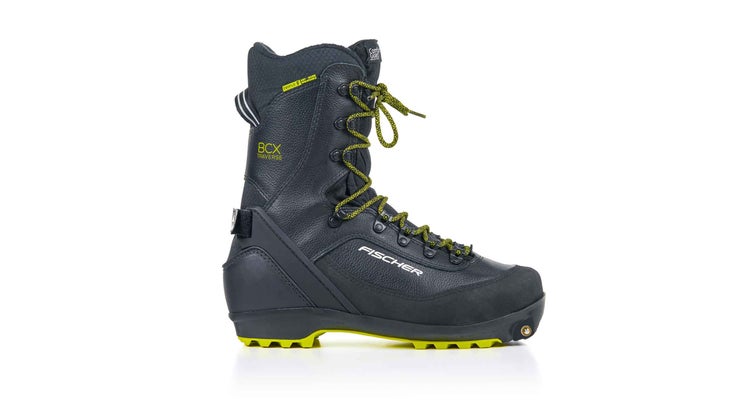
Fischer BCX Traverse Boots
Built for durability in harsh conditions, the high-profile, heavy-duty BCX Traverse Boot features the breathable Triple F membrane, which helps manage moisture to keep feet dry in snowy environments. Not having to boot swap in the snow is a significant advantage, and with a rubberized boot chain, these boots offer the sturdy support and reliable lacing system needed to turn them into workable off-ski trompers. Just remember to carry an extra set of laces in the backcountry, in case one set breaks.
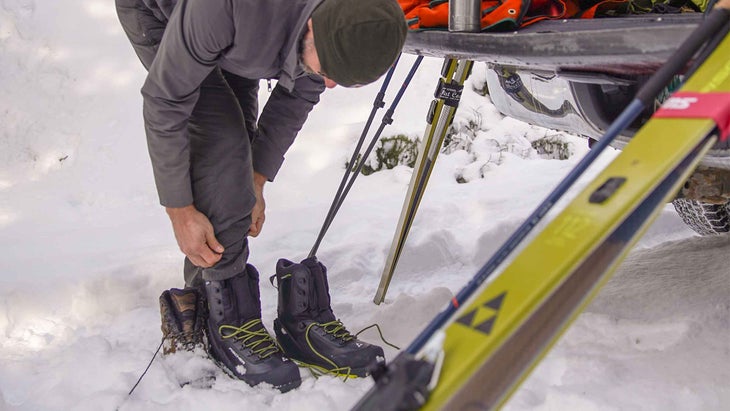
“The new binding placement, shifting from the toe bar to pins on the side of the ball of the foot, makes a big difference in stability and control, especially on uneven terrain. It’s much easier to get in and out of, which is a huge plus when I’m constantly moving between skis and hiking,” said Ramsay.
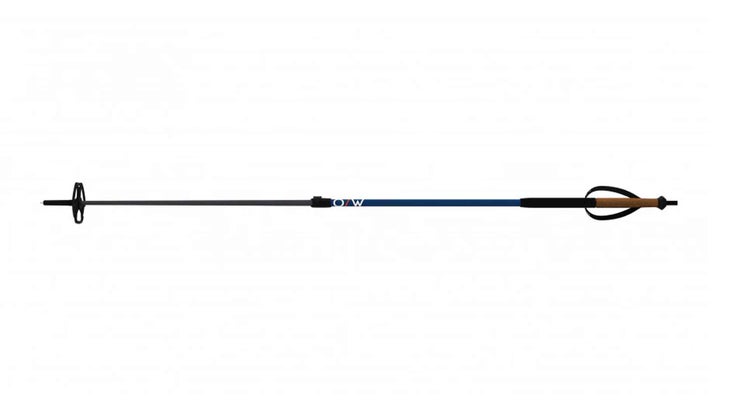
One Way BC Vario Poles
Light, durable, and adjustable, these aluminum poles feature a quick lock for easy length changes on varied terrain. The large, flexible baskets excel in soft snow and are easy to untangle from grabby brush, while the ergonomic straps offer comfortable support over long distances.
“The large baskets on these poles are perfect for soft snow, keeping me from punching through and helping me move efficiently across the terrain. The straps are also easy to handle, even when I’m juggling tools,” said Ramsay.
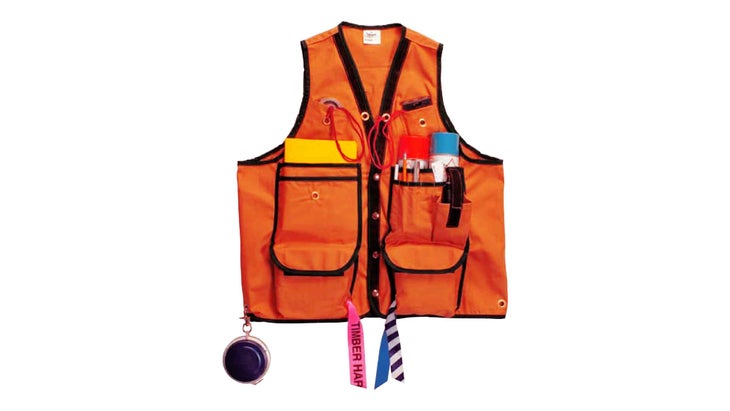
PacForest Supply 15-Pocket Vest
High viz and lightweight, Ramsay’s staple outer layer lets the unlikely onlooker (or hunter) know that the wearer is on the job. The fifteen pockets of various sizes provide easy access to a gas station breakfast burrito, TP, and other backcountry essentials below. The vest is durable and features a large pocket that can accommodate a tablet, making it ideal for fieldwork. While it isn’t waterproof, Ramsay notes that layering underneath provides the necessary protection from the elements.
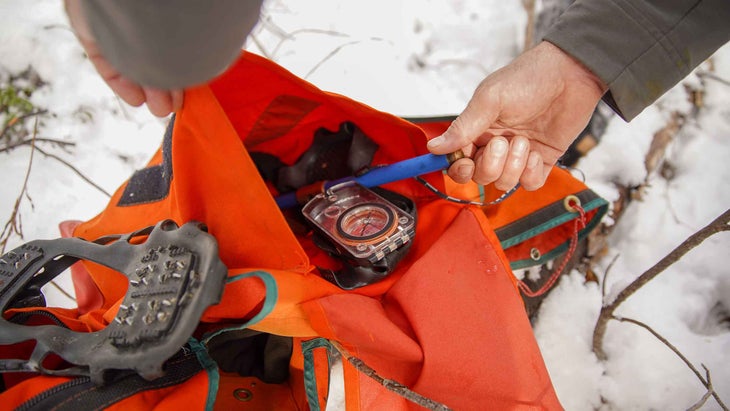
Accessories
In addition to hardgoods, Ramsay relies on several essential smaller tools for a workday in the woods. His ($60) is used for navigation, route mapping, and finding his way back to the rig before dark, which comes quickly in winter this far north. The ($195) helps him measure tree height and slope, which is crucial for terrain and tree growth assessments. For other tasks like calculating timber volume, tree age and health, and measuring tree diameter, Ramsay uses specialized forestry devices like a tree boring tool and loggers tape. His well-worn ($25), with a screw-on top, fits neatly in his vest, providing a caffeine boost throughout the day.
And lastly, no day in the field would be complete without layers and his canine consultant, a loyal companion who keeps watch for wildlife.
